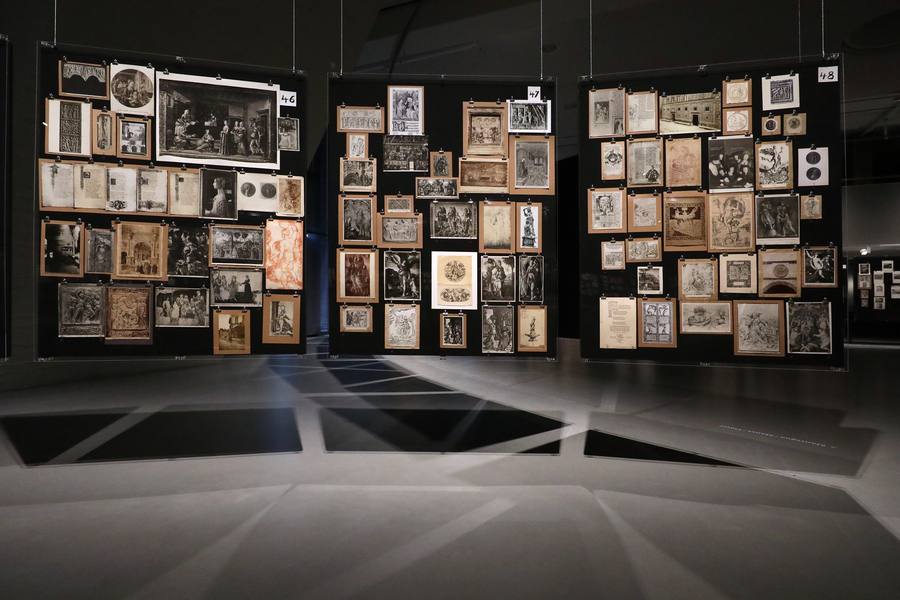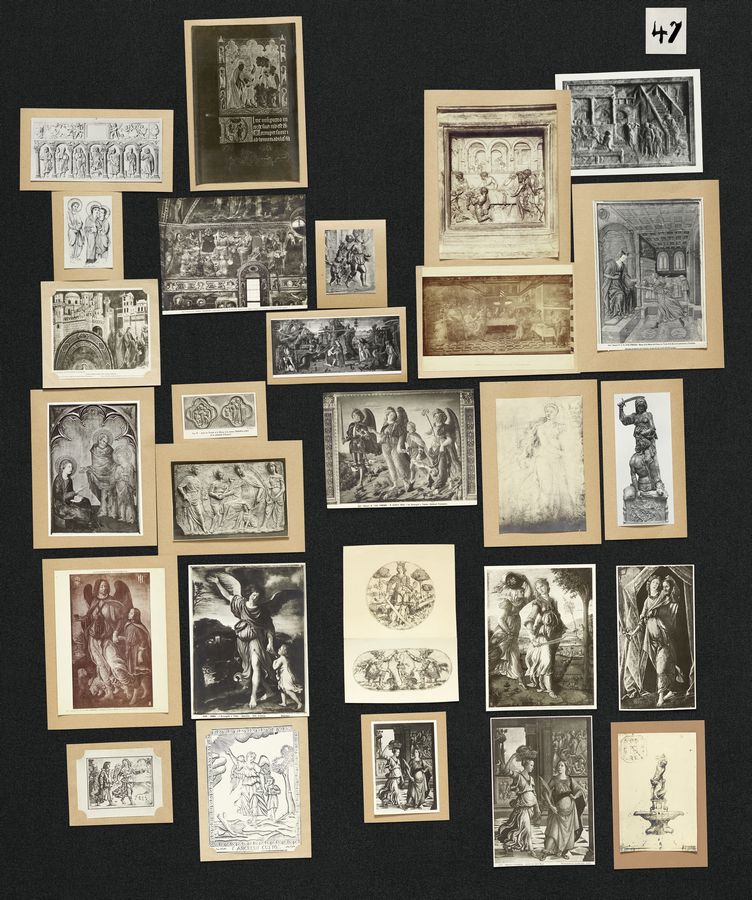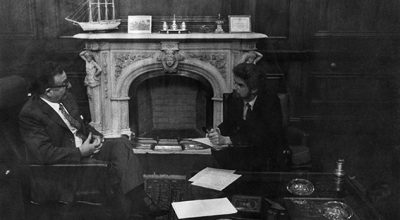
ABY WARBURG: BILDERATLAS MNEMOSYNE – THE ORIGINAL
In the 1920s, the scholar of art and culture Aby Warburg (1866-1929) created his Bilderatlas Mnemosyne tracing recurring visual themes, gestures and patterns across time, from antiquity to the Renaissance and beyond to contemporary culture. Viewing pictures in this nonlinear way, with no accompanying text and outside of a museum, was radical 100 years ago. This is what makes this Atlas so relevant over time, even more so today.
Haus der Kulturen der Welt, in Berlin, presents Aby Warburg: Bilderatlas Mnemosyne – the Original, curated by Roberto Ohrt and Axel Heil in collaboration with the Warburg Institute, where all 63 panels of the Atlas are reconstituted for the first time from Warburg’s original, multi-colored images.
An accompanying exhibition at the Gemäldegalerie (Staatliche Museen zu Berlin), Between Cosmos and Pathos. Berlin Works from Aby Warburg’s Mnemosyne Atlas, is showing artworks ranging from prehistory and early history through to the modern age that Warburg used as the basis for his encyclopaedic image collection. In a kind of three-dimensional restaging of the collection, works from 10 of the collections of the Staatliche Museen zu Berlin enter into a striking dialogue with Warburg’s magnum opus.

Aby Warburg was one of the most important art historians of the late 19th and early 20th centuries, who tirelessly investigated the “afterlife” of classical motifs in post-Renaissance European culture. Warburg’s research repeatedly reveals the instability of the lines drawn by European civilization narratives. Interventions by contemporary artists and researchers in HKW’s lobby demonstrate how colonial notions of history reach into the present and what aesthetic and ritual means can be used to address them.
Aby Warburg studied the interplay of images from different periods and cultural contexts. He designed the Mnemosyne Atlas to provide a pictorial representation of the influences of the ancient world in the Renaissance and beyond.
The Atlas consisted of large black panels on which he placed photographic reproductions of artworks from the Middle East, European antiquity and the Renaissance, alongside contemporary newspaper clippings and advertisements. In the years leading to his death in 1929, Warburg and his closest colleagues Gertrud Bing and Fritz Saxl experimented with the form and function of the Bilderatlas. Their goal was to present a publication designed for discussion among experts as well as the broader public. During the course of its creation, the Atlas developed into an instrument of cognition.
Warburg’s method set new standards: it consisted in rearranging canonized images and looking at them across epochs. His project traversed the boundaries between art history, philosophy and anthropology and was fundamental for the modern disciplines of visual and media studies. Today, his use of visual memory provides inspiration and alternative routes through a reality dominated by visual media.


The exhibition at HKW restores the last documented version of the 1929 Atlas almost completely with the original images. In collaboration with the Warburg Institute, the curators Roberto Ohrt and Axel Heil have located most of the originals -some partly in color- 971 images from the 400,000 individual objects in the Institute’s Photographic Collection to show all 63 panels of Warburg’s unfinished magnum opus for the first time since his death.
In addition, 20 unpublished large-scale photographs of panels that were previously only accessible in the Warburg Institute archives will be shown -most of them made in autumn of 1928, they originated from the previous versions of the Atlas and are presented as large prints of the original black and white negatives.
A folio volume gathers the 63 plates of Warburg’s Atlas –newly photographed from the original, multi-colored images and the 20 panels from the previous versions in black and white along with essays by Axel Heil, Roberto Ohrt, Bernd Scherer, Bill Sherman and Claudia Wedepohl. The captions have been updated and supplemented by the authors Roberto Ohrt, Axel Heil and the Mnemosyne research group since 2012 and show the state of research as of February 2020. A second volume with extensive commentaries by the curators will be published in spring 2021 by Hatje Cantz.
The companion guide to the exhibition of the Staatliche Museen zu Berlin at the Gemäldegalerie has been published by Deutscher Kunstverlag.
ABY WARBURG: BILDERATLAS MNEMOSYNE – THE ORIGINAL
Haus der Kulturen der Welt, Berlin
Sep 4 – Nov 30, 2020
*
BETWEEN COSMOS AND PATHOS. BERLIN WORKS FROM ABY WARBURG’S MNEMOSYNE ATLAS
Kulturforum, Gemäldegalerie, Berlin
Curated by Neville Rowley and Jörg Völlnagel
Aug 8 – Nov 1, 2020
También te puede interesar
HAMLET LAVASTIDA: CULTURA PROFILÁCTICA
Through his personal confrontation with the cultural archives, which are not recognised as such within Cuban society, Hamlet Lavastida (b.1983 in Havana/Cuba, lives and works in Havana) creates a register and demands a critical...
SERGIO ZEVALLOS: EJERCICIOS DE TRANSFORMACIÓN
Hasta el pasado 14 de enero, Haus der Kulturen der Welt (HKW) acogió” Ejercicios de transformación”, una exposición centrada en las más de cuatro décadas de trayectoria de Sergio Zevallos (Perú, 1962 – vive...
HUBERT FICHTE, EL PRECURSOR DE ESTUDIOS QUEER Y POSTCOLONIALES QUE HOY REÚNE A ARTISTAS E INTELECTUALES EN CHILE
¿Qué aportes de sentido nos provee hoy la mirada crítica de los textos de Hubert Fichte de los 70 sobre su paso por el Chile? Es precisamente lo que proponen desentrañar la exposición y...



